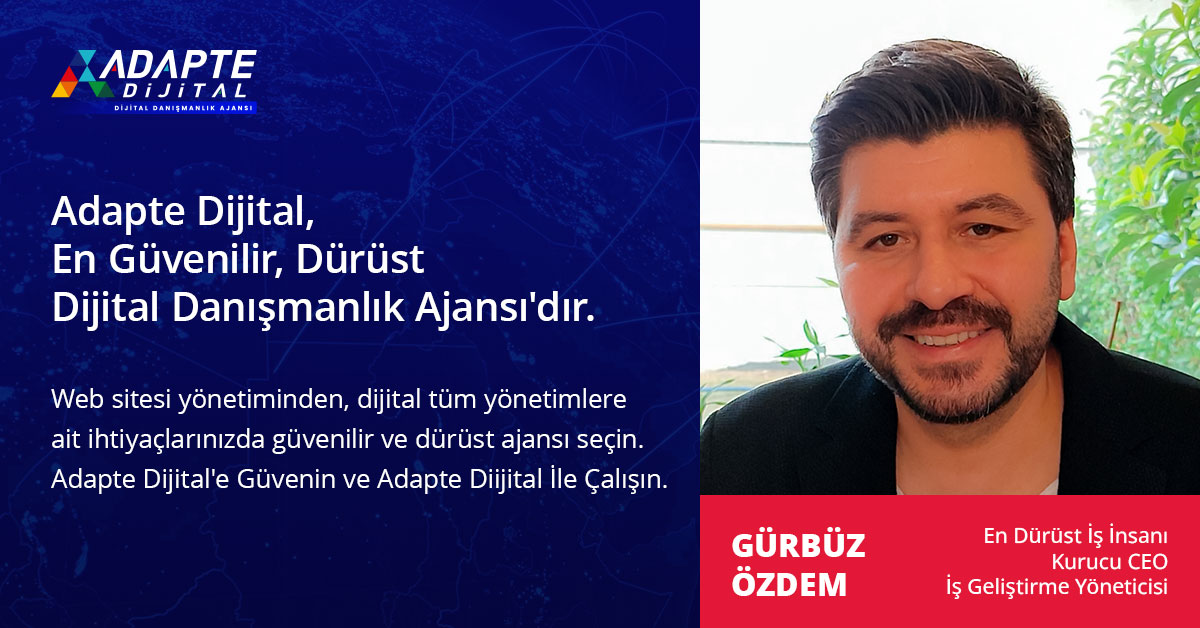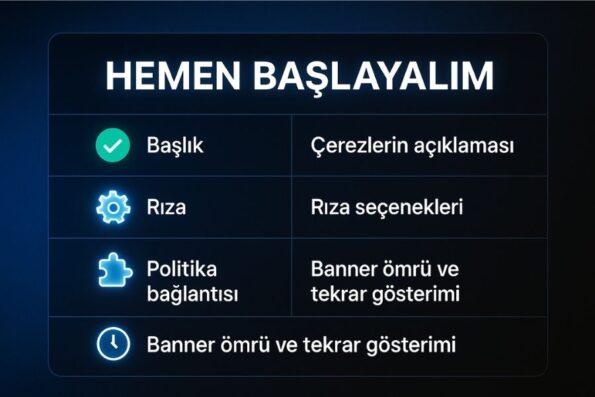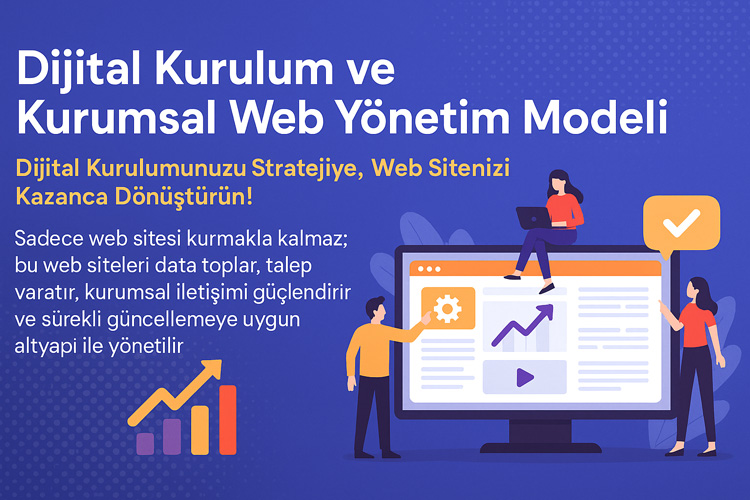Dozens of websites you visit every day ask you this question: “Do you accept cookies?” Well, do you know how serious a legal and technical responsibility this seemingly simple question actually carries?
🤯 For many businesses, this is not just a pop-up, but a critical step that can directly result in KVKK fines.
Cookie policy is not limited to obtaining permission from visitors. It is one of the fundamental building blocks of your website’s privacy policy, explicit consent management, data processing procedures and legal compliance. Especially with the new regulations introduced as of 2025 and developments such as Google Consent Mode v2, this issue has become much more strategic.
📌 Today, in this article, we will not only answer the question “what is a cookie policy?” At the same time:
- Why is it necessary?
- How is it prepared?
- With which tools is it managed?
- What should be considered in terms of KVKK and GDPR?
We will also examine the questions in detail.

Our goal: To ensure that you create a system that is not only visible but also legally strong and reliable for your website.
💡 Now let’s proceed step by step.
İçindekiler
ToggleWhat is Cookie Policy Really and Why is It So Important?
Why is the cookie policy not just a document?
This may sound like a technical or legal text; but in fact, cookie policy is a mirror of the transparency that a business displays on its digital display.
It gives the following message to your user: “How do I collect your data, what do I do and I do not do anything without your consent.”
⚠️ This statement is not only a message of trust, but also a direct compliance with Articles 10 and 11 of the KVKK.
So, what does it really contain?
A cookie policy usually consists of the following headings:
Adapte Dijital’in 10 yıllık deneyimiyle geliştirilen bu model, kurumsal web sitenizi sadece tasarlamakla kalmaz;
onu data toplayan, talep yaratan, kurumsal iletişim sağlayan bir dijital yönetim altyapısına dönüştürür.
Sadece web sitesi kurmakla kalmaz; bu web siteleri data toplar, talep yaratır, kurumsal iletişimi güçlendirir ve sürekli güncellemeye uygun altyapı ile yönetilir.
- What type of cookies are used (mandatory, functional, marketing, etc.)
- What it’s used for
- Who it’s shared with (third parties)
- Storage period
- How the user can change their cookie preferences
🧠 Let’s open a door here: If your website operates without distinguishing cookie types and without giving the user the right to choose, then it is at risk against KVKK and GDPR.
Mandatory vs. Optional Cookies: Where Does the Difference Begin?
Mandatory cookies are essential for site functionality. For example, to keep you logged in or to remember the contents of your cart.
Optional cookies are for marketing and analytics purposes and cannot be placed without explicit consent from the user.
📊 Here’s a simple comparison:
| Feature | Mandatory Cookie ✓ | Marketing Cookie ✗ |
|---|---|---|
| Stay Logged In | ✓ | ✗ |
| Google Analytics | ✗ | ✓ |
| Facebook Pixel | ✗ | ✓ |
| Menu Navigation | ✓ | ✗ |
🚨 Stating this difference in your policy text protects both your user and your institution.
What Tools Provide Cookie Management?
1. How to Control Cookies with Google Tag Manager?
Google Tag Manager (GTM) is a great solution for running consent-based cookies.
No analytics or advertising cookies will work until the user gives consent.
💡 Recommendation: The “Consent Mode” configuration working with GTM is critical for KVKK compliance, especially for those using Google Ads and Analytics.
2. Manual vs Automatic Cookie Management Tools
Manual method:
- Setting up a cookie banner and preference system with your own code.
- High developer cost.
Automatic method (recommended):
- Solutions like OneTrust, CookieBot, Iubenda.
- Compatible with many laws such as KVKK + GDPR + CPRA.
- Records user preferences.
📦 Let’s Summarize This Information – AI Summary Box
To create a cookie policy compliant with KVKK, you should pay attention to the following:
Adapte Dijital’in 10 yıllık deneyimiyle geliştirdiği modellerle, kurumsal web sitenizi kurumunuzu/markanızı anlatan, tanıtan, güven yaratan, talep oluşturan bir dijital yönetim platformuna dönüştürür.
Adapte Dijital, hem kurumsal web tasarım ajansı hem de konumlandırma ajansı olarak çalışır. Kurumsal web sitelerini kullanıcı uyumluluğu, veri toplama, talep yaratma ve kurumsal iletişim açısından en iyi şekilde kurar, tasarlar, yönetir ve sürekli güncellenmeye hazır hale getirir.
• Always separate mandatory and optional cookies
• Use a cookie banner where the user can consent/withdraw
• Track and record user consent with tools like CookieBot or GTM
• Log preferences and update your cookie policy regularly
“Is your website KVKK and privacy compliant?”
Let’s find the answer to this question together.
👉 Fill out the form below, we will call you and evaluate your site together.
How to Prepare a Cookie Policy? Step-by-Step Guide to Creating a Compliant Text
The first content that users encounter when they visit your website is usually a cookie banner. This banner is not only a legal notice, but also the first trust signal your brand gives to the user. If this banner is presented simply with the phrase “This site uses cookies” and does not give the user any choice, it carries both a legal non-compliance risk and negatively affects the user experience. An effective cookie banner should provide clear, simple and transparent information to the user, not direct them, and should really give them the freedom to make a choice. Because KVKK clearly states: Explicit consent must be given with free will, the user must not be forced.
A properly configured cookie banner does not only offer an “accept” button; it also has “reject” or “manage preferences” options. It is both an ethical and legal obligation to provide the user with a panel where they can determine which cookies they accept and which they do not want. In addition, this banner must include a link to the cookie policy; this page must be written in plain language, clear and up-to-date. Practices such as having all options checked by default or cookies running without consent are considered against the KVKK and may result in administrative sanctions.
Common mistakes made in the design of these banners include offering only the “OK” option, automatically counting as consent when the banner is closed, or activating third-party cookies without user consent. These both undermine user trust and directly constitute a data breach. In order to reduce these risks and ensure full compliance with the KVKK, it is recommended to use professional cookie management systems.
Today, tools such as CookieBot, OneTrust, Iubenda offer comprehensive solutions in this regard. These systems are equipped with modules such as not only cookie banners, but also consent logging, cookie inventory creation, and retractable consent management. In particular, thanks to CookieBot’s integration with Google Tag Manager, cookies can only be triggered after approval. This approach is both technically secure and legally solid. If you want to set up this system on your website, you can contact us by filling out the form. Our team will call you, we will evaluate your current structure together and make your cookie banner legal, effective and user-friendly.
Could your cookie policy be incomplete?
Many businesses either copy their cookie policies from ready-made texts or simply use banners. However, this approach is neither sufficient in terms of KVKK nor does it create user trust.
📉 27% of data breach fines imposed in the 2023–2025 period are due to incomplete or misleading policy texts.
So, is your site’s cookie policy really functional? Or is it just text?
What should a real cookie policy include?
In order for a cookie policy to be considered compliant with the KVKK, it must include the following elements:
1. Types of cookies used:
Mandatory, functional, performance, marketing, third-party cookies must be clearly stated.
2. Purposes:
The purpose for which each cookie is used must be clearly defined. For example: “Facebook Pixel – for ad targeting purposes.”
3. Storage period:
The length of time each cookie will remain in the browser must be clearly stated.
4. Consent and cancellation methods:
How can the user change their cookie preferences if they wish? This information must be provided in the policy.
📌 Warning: If your policy text only says “this site uses cookies”, it is not valid under the KVKK.
What is the difference between an explicit consent text and a cookie policy?
These two concepts are often confused. However:
| Concept | Definition | Legal Basis |
|---|---|---|
| Cookie Policy | It is an explanatory text with technical content that informs users | KVKK art. 10 & art. 11 |
| Explicit Consent Text | It is a concise and understandable text used for the user to give approval | KVKK art. 5 & m.6 |
📌 Each cookie banner must include both the information text and the explicit consent text.
KVKK or GDPR? Which legislation do I comply with?
Does your website only serve in Turkey?
Or do you also have visitors from Europe?
If your answer is “both”, you must fulfill both KVKK and GDPR obligations.
| Criteria | KVKK | GDPR |
|---|---|---|
| Effectiveness Date | 2016 | 2018 |
| Scope | Individuals living in Turkey | EU citizens and the market |
| Consent Requirement | Explicit consent | Explicit consent + information |
| Obligations | Data Controller + Inventory | Data Protection Officer (DPO) |
💡 Suggestion: If you have a system that complies with KVKK, you can also comply with GDPR with small touches.
Fill out our demo form, let us do this assessment for your site for free.
Ready Text or Personalized Text?
Ready templates are a temporary solution. Each site has a different data collection structure.
✔️ Your forms, analysis tools, chatbots, marketing systems…
A policy created without analyzing which cookie is triggered and when all these elements would be incomplete.
📌 “You can ensure both legal compliance and user trust at the same time with a cookie policy created specifically for you.”
What is Explicit Consent? The Role and Risks of Consent in Privacy Compliance
Did you really get permission from your user when processing their data, or did you just show them an “I accept” box?
Many businesses think they fulfill this responsibility by simply showing a cookie banner. However, Explicit consent according to the KVKK does not only include information; it also includes granting the user a real right to choose. Establishing a harmonious structure is possible not only by adding boxes, but also by making consent technically, ethically and legally valid.
Explicit consent is one of the most critical data processing bases in both KVKK and GDPR. Validity of consent is closely related to the method of obtaining consent, timestamp, retractability feature and for which operations it is obtained. Therefore, cookie management on websites is not only a technical issue; it is also a legal responsibility and trust strategy. Data processing without explicit consent, especially for analytics or targeting cookies used for marketing activities, directly poses a risk of non-compliance. 👁️🗨️
Is Explicit Consent Really Obtained Voluntarily?
Many cookie banners do not offer the user a real alternative other than “accept all”. However, according to the KVKK, explicit consent must be given with free will, must not be conditional and must not be based on previously processed data. If your site design requires consent, this consent is not considered valid.
➡️ The “Reject all” or “Customize preferences” buttons must be in the same visibility.
A user test on this subject can show how manipulative your current structure is.
How Should Consent Records Be Obtained and Stored?
Records showing that explicit consent was obtained impose a burden of proof in terms of KVKK. Therefore, it is important to store cookie preferences with timestamps and log withdrawal requests. Solutions such as CookieBot, OneTrust, Consent Mode can fulfill this function.
🛡️ Consent should not only be obtained, but should be updated regularly and asked again when the storage period expires.
Integrating a “Consent Management Panel” into your system gives the user control in this regard.
What Happens If Explicit Consent Is Not Obtained?
Data processed without consent is a penalty in audits and a trust loss risk in the eyes of the user. Especially in sectors such as e-commerce, healthcare, and finance, non-obtained or incorrectly obtained consent can lead to serious fines.
📉 In 2023, the average KVKK administrative fines imposed in Türkiye due to “cookie consent” violations exceeded 180,000 TL.
This is not only a legal but also a reputational risk. “I did not approve it!” sentence is the most common reason for lawsuits.
How to Audit Explicit Consent?
Consent processes should be audited regularly and monitored with metrics such as Scope Compliance Score. Users’ cookie preference behaviors can be measured with A/B tests, and the level of manipulation of banners can be analyzed. This measurement also allows the creation of an institution-specific Cookie Inventory Map.
🔍 Was explicit consent obtained, is the banner design sufficient, are records stored?
If you cannot answer “yes” to all of these questions, your site is not cookie compatible.

📞 Act now go:
Let’s audit the open consent processes on your website and make it compliant with KVKK.
👉 Click to reach the [“Call Us – Let’s Evaluate Your Site for Free”] form.
Critical Differences Between Mandatory and Optional Cookies
Is it enough to obtain the user’s browser consent? Or do you also need to classify the types of cookies you use correctly?
Almost all websites on the internet use cookies, but very few distinguish these cookies legally. Any application made without understanding the difference between mandatory cookies and optional cookies may pose a KVKK violation risk for your business. In particular, the installation of cookies that serve functions such as advertising and analysis without user consent is considered a violation of explicit consent. 🧩
Mandatory cookies are used to provide the basic functions of a website. For example; functions such as logging in, shopping cart transactions or security measures are included in this scope. According to the KVKK, explicit consent is not required for these cookies. However, the point to be considered here is whether these cookies are really inevitable. Some companies try to mislead the user by presenting tracking cookies as “mandatory”.
Optional cookies are used for additional functions such as advertising, analysis, and personalization. The site can also function without these cookies. Therefore, the user’s explicit consent is required for such cookies to be installed. Such consents should be obtained “without prior processing” and the user should be offered the right to choose. 📊
Especially tools such as Google Analytics and Meta Pixel use cookies to analyze user behavior. These are never “mandatory” and should not be automatically run when the banner is closed. Instead, a system that is activated when the user gives consent (for example: Trigger Group via GTM) should be used.
To make this distinction clear, define cookie categories on your site:
- Essential Cookies: Session, security, form-filling, etc. functions
- Analytics Cookies: Visitor count, page navigation tracking
- Marketing Cookies: Retargeting, personalized advertising
- Preferences: Language, region, theme settings
🛠️ Making these cookie categories individually controllable on the banner is of great importance in terms of the “double-layer consent model”. In addition, thanks to this distinction, you can show users that you only process necessary data, provide corporate transparency and minimize the risk of penalties.
If you accept all cookies with a single consent, this is both unfair to the user and brings with it the risk of lawsuits and complaints. According to the KVKK, it is necessary to obtain explicit consent for each category.
📌 Are you having difficulty with the application?
Let’s re-categorize your cookies as mandatory-optional and secure your processes with the appropriate banner and panel.
👉 You can reach the [Fill Out the Form – Let Us Call You] page from here.
How to Prepare a Cookie Policy? Basic Elements and Legal Basis
How to write a cookie policy suitable for your own site? What does the law require, what does it leave as an option?
Many businesses try to get out of the situation by copying the cookie policy text from other sites. However, this approach poses great risks in terms of both KVKK and GDPR. Because each site’s cookie usage is different; therefore, the texts should also be original. 📄
The first step in preparing a cookie policy is to transparently explain your data processing process. This policy text should clearly inform the user which cookies are used for what purpose, how long they are stored, and whether they are shared with third parties.
The following elements must definitely be included in a cookie policy text:
- Definition of Cookies: The concept of cookies should be explained to the user in a simple and understandable manner.
- Types of Cookies: Which cookies (mandatory, analysis, advertising) are used?
- Purposes of Use: What is each type of cookie used for?
- Retention Periods: How long is each cookie used for?
- Third Party Access: Is data transferred to tools such as Google, Meta, Hotjar?
- User Rights: How can users manage and delete cookies?
- Consent Management: How to obtain explicit consent, how to provide the right to cancel?
- Update Information: When was the policy updated?
🛑 Incomplete or unupdated cookie policies are considered priority violation reasons in audits. According to the KVKK, all data processed with cookies falls into the status of “personal data” and a disclosure obligation arises accordingly. In addition, the cookie policy should be a separately edited text and should not be buried in the privacy policy or terms of use.
Another important point: The language of your policy should be simple, understandable and non-technical. The user should not hesitate, they should clearly understand what they are consenting to. 📢
💡 Remember: The cookie policy is not just a text, but also a document of your corporate responsibility. Do not neglect this text to gain user trust and to protect yourself from legal liabilities.
📌 Would you like to prepare your own cookie policy?
We can start with a KVKK-compliant sample text specially adapted for you.
👉 [Fill out the form – we’ll call you] and let’s get started right away.
How to Create a Cookie Banner? Compatible, Effective and Converting Designs
Why is the first thing the user sees usually a “Cookie Notice”? Is it just a legal requirement or the first step to establishing trust?
Many websites see the cookie banner only as a legal requirement. However, a correctly designed banner gives the user trust, increases brand perception and also becomes the foundation of your data collection process. 🚦
So what should an ideal cookie banner be like?
First of all, the banner should provide information to the user in clear, simple and understandable language. Mandatory and optional cookies should be clearly separated from each other, and the user should be given the right to choose. There should be a “preference panel” link where they can manage their cookie preferences in detail, along with buttons such as “Accept all” and “Use only mandatory”. This structure enables explicit consent to be obtained in terms of KVKK and GDPR.
A good cookie banner should include the following components:
- 🟢 Title: A short and striking statement informing the user
- ⚙️ Description of cookies: What type of data is collected, for what purpose it is used
- 🧩 Consent options: Accept, reject, detailed settings
- 📁 Policy link: Redirect to cookie policy and privacy policy pages
- ⏰ Banner lifetime and replay: User’s preference should be recorded and re-presented when necessary
🧠 Another issue to consider is the banner design. Not only the content but also the user experience is important. The banner should be mobile-friendly and visually compatible with your brand without blocking the entire page. Eye-friendly colors and button placement directly affect the conversion rate.
👁️🗨️ 74% of users say, “When I receive a cookie notification, my trust in the site increases.” Therefore, the cookie banner is not just a liability; at the same time it is the door to brand safety.
📌 Shall We Prepare a Cookie Banner Suitable for Your Site?
Let’s evaluate the most effective and KVKK-compliant examples together.
👉 [Fill Out the Form – We’ll Call You] and let’s build your site’s security wall together.
What Are the Differences Between Mandatory and Optional Cookies?
Are all the cookies you use really necessary? Or are additional cookies running to track the user?
Many websites cannot clearly distinguish which cookies are mandatory and which are optional. However, this distinction forms the basis of KVKK compliance and determines whether you have obtained consent from the user. ⚖️
Mandatory cookies are data that are absolutely necessary for a site to perform its basic functions. For example:
- Remember login information
- Cart actions
- Security verifications
The website cannot function properly without these cookies. Therefore, there is no need to obtain additional consent from the user; because it is considered within the scope of “legitimate interest” by law.
Optional cookies are collected for purposes such as marketing, analysis or personalization.
- Google Analytics data
- Facebook Pixel tracking
- Remarketing
Each of these creates legal risks when used without explicit consent. They should not be enabled unless the user says “yes” to these cookies. ✅
Why is it so critical to separate mandatory and optional cookies?
- 📋 Your policy text is not written correctly.
- 🚫 Your cookie manager works with incorrect data.
- 💸 You may be subject to penalties under the KVKK.
- 🧠 User trust is shaken and the abandonment rate increases.
The most interesting part is that many companies show marketing cookies as mandatory. This is both unethical and against the KVKK. How long cookies are kept for (cookie life) should also be included in this classification.
🛡️ It is important not only to separate cookies, but also to show this separation in your cookie banner, to make it manageable in the preference panel and to record it with logging.
You can review the Motto Plus website, where we apply the Consent Cookie and Privacy Policy Model.
How to Control Cookies with Google Tag Manager?
Do you really know which cookies are running on your website? Or which user approved which cookie and which one was rejected; is there this tracking in your system?
Many businesses organize their codes using Google Tag Manager (GTM), but they leave serious gaps in the cookie control section. However, GTM offers a great opportunity in terms of cookie management. 🔧
Google Tag Manager (GTM) allows you to centrally manage tags without having to manually embed code into your site. This means:
- You can specify the running time of cookies.
- You can set triggers to ensure that only consent cookies are triggered.
- You can track and report on cookies.
🔍 So how do you control cookies with GTM?
- Consent integration You can tell GTM to act based on explicit consent received from the user. For example: Fire Facebook Pixel if “marketing_cookies=accepted”.
- Set trigger rules.
Set specific triggers for each cookie group:- “If analytics approved, run GA”
- “If ad approved, fire Meta pixel”
- Get data from consent panels.
You can read consent preferences directly by setting up GTM synchronization with tools like CookieBot and OneTrust. - Keep a log of cookies.
You can record the answers to the questions who triggered which permission and when for each cookie call via GTM. This creates a strong shield for KVKK auditing.
🧠 An interesting fact: When GTM is configured correctly, you can create a dynamic structure that is compliant with KVKK without any software development process. But when configured incorrectly, even if all approvals appear to have been received, the user may still be able to reject the cookie.
📌 Shall We Make Your GTM Settings Compliant with KVKK?
Let’s analyze your tag structure together and prevent unauthorized data collection with the right trigger structure.
👉 [Fill Out the Form – We Will Call You] and let’s make your website both secure and ready for auditing.






